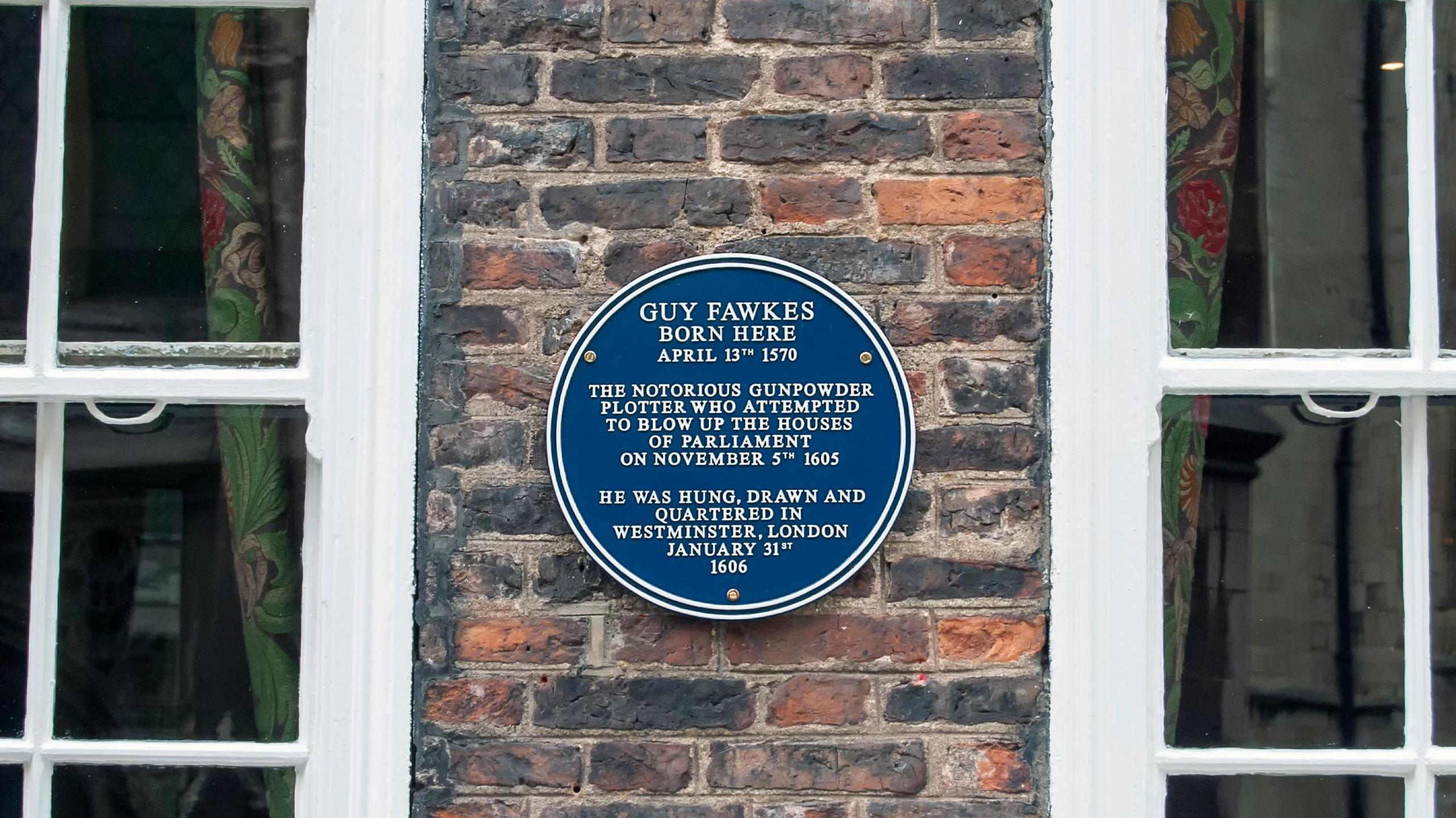Guy Fawkes' school won't burn effigy of ex-pupil

Plotters conspired to blow up Parliament and kill King James I in 1605
- Published
The former school of gunpowder plotter Guy Fawkes is all set for its annual fireworks display - but there will not be a bonfire or a guy, the head teacher has said.
Fawkes - the most infamous conspirator behind a plot to blow up Parliament and kill King James I in 1605 - was born in York in 1570, and was educated at St Peter's School.
The anniversary of the plot's discovery on 5 November became known as Bonfire Night, and over the years dolls made from old clothes and straw were burned on bonfires to represent the treason committed by Fawkes.
Head Jeremy Walker said: "We have fireworks at the school... but what we won't be doing is having a bonfire and burning an effigy of one of our former pupils on top of it."

A young Guy Fawkes attended St Peter's School in York
Mr Walker said the school had an "interesting relationship" with Fawkes, as he was a well-known historical figure but also a criminal.
"On the one hand, he was very clearly a terrorist and he attempted regicide [the act of attempting to kill a reigning monarch], which very clearly is not good," he said.
"On the other hand, he is known worldwide for his image.
"You only have to draw the stove pipe and the goatie beard and moustache and everybody knows instantly who Guy Fawkes is."
The independent school has moved from its original site near York Minster to the Clifton area of the city - on land once owned by the plotter himself.
Fawkes inherited the land but sold it to fund his travels to Europe - and in what Mr Walker called a "quirky circularity", the school was later rebuilt on that land.
Hannah Sackville-Bryant investigates the Yorkshire history of Guy Fawkes.
Alan Sharp, of White Rose York Tours, said Fawkes was probably born in Stonegate, York, as that was where his father had a property.
Explaining Bonfire Night traditions, he said they started after the Catholic conspirators were arrested.
"The Lord Mayor of London ordered a day of rejoicing because the king had been spared, by setting bonfires across the capital," he said.
"They then made it an annual day of rejoicing and building the bonfires, but that thing about burning an effigy on top of the bonfire, that didn’t start until about 50 years afterwards and then it was usually the Pope who was burnt as an effigy and not Guy Fawkes.
"Burning a guy as an effigy really started around the Victorian era."

Guy Fawkes is said to have been born on 13 April 1570 in York
Another North Yorkshire link to the plot was at nearby Ripley Castle, as co-conspirators Robert and Thomas Wintour spent the week before 4 November there, buying surplus armour from the surrounding district.
Sir Thomas Ingleby, the castle's owner, said: "They were amongst the most dangerous leaders in the conspiracy and both were killed in the mop-up operations afterwards."
He said it was a "family" conspiracy which "collapsed like a pack of cards" once Guy Fawkes was discovered with a suspicious amount of firewood, and the gunpowder was then found.
"You can tell this was a Yorkshire plot," he said.
"It all collapsed because the quality of the gunpowder was poor, it was stale and it was kept in damp conditions.
"Only a Yorkshireman would plot to blow up the Houses of Parliament and stick to the cheapest materials possible – it has Yorkshire written all over it!"
Listen to highlights from North Yorkshire on BBC Sounds, catch up with the latest episode of Look North or tell us a story you think we should be covering here, external.